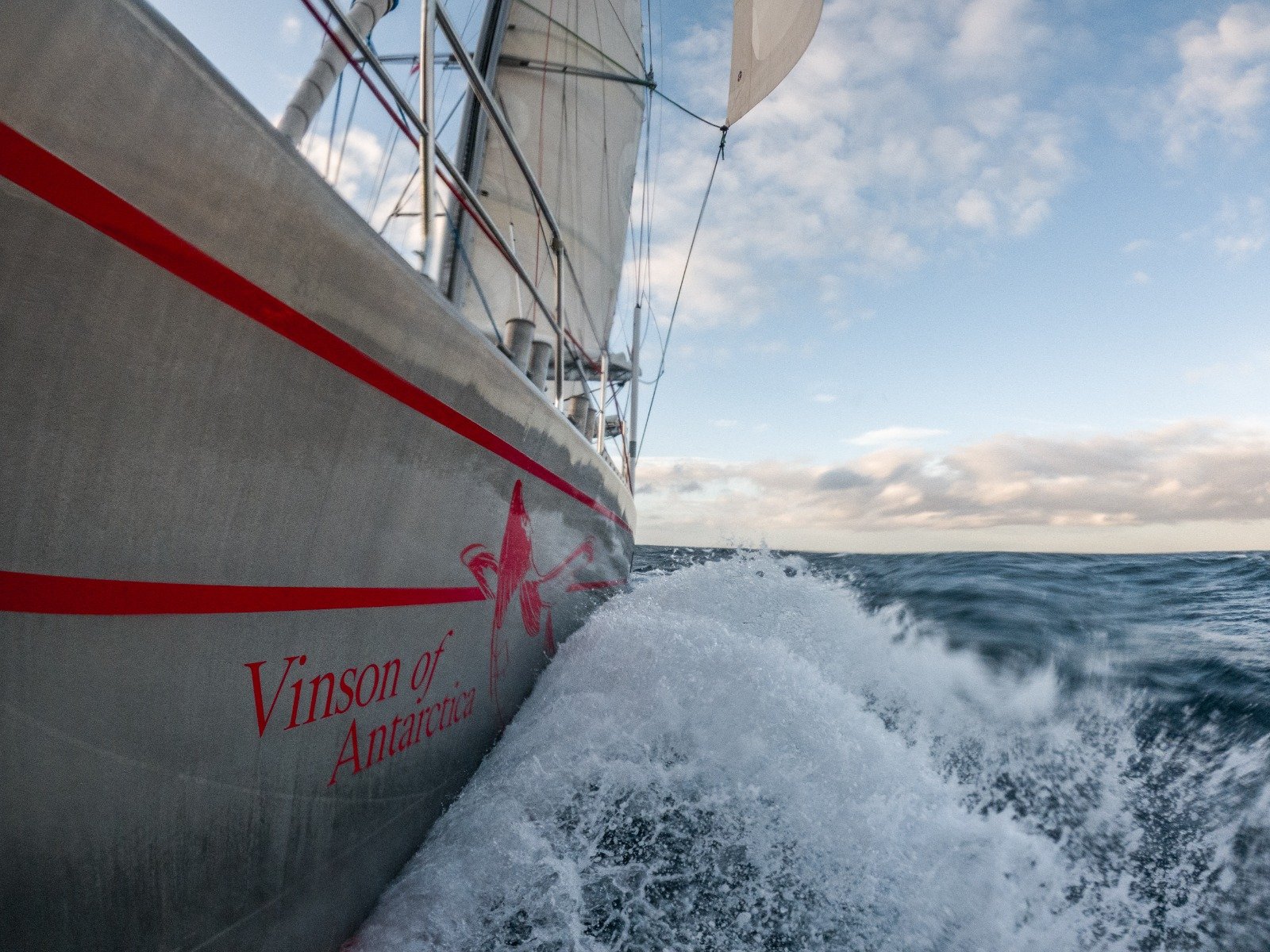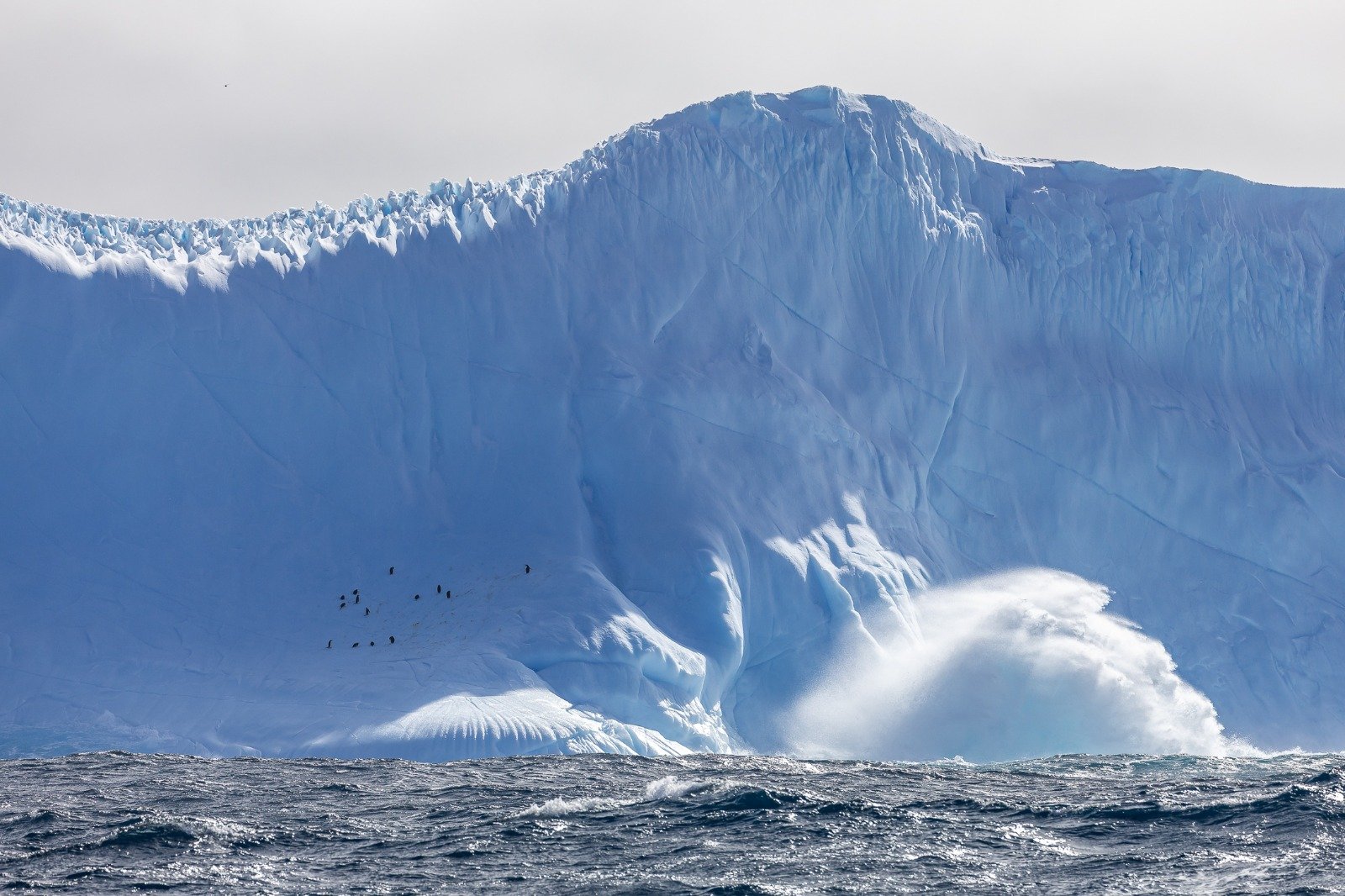Zavodovski Expedition. As far as Thule and Cook Is.
We spent two pleasant night in Grytviken brewing over the weather forecast, which looked all but optimal for landing on Zavodovski. A big low was forming bringing storm force winds to South Georgia and the Northern of the South Sandwich Islands. So we decided to sail all the way South, to Southern Thule at 59.27’S and let the worst of the weather pass to the North of us.
This far South the forecast suggested 20-30 knots from the NW, which made Ferguson Bay on the South West corner of Thule Island and the only anchorage down there a good place to wait out the storm. So we slipped lines from Grytviken in a moderate westerly breeze, hoisted the sails inside the protected harbour and waved goodbye to the team at KEP (King Edward Point). The whole East coast was still speckled with icebergs of small and large and with the ice capped mountains in the background it was a fantastic scenery to sail past.
As soon as we sailed out of the lee of the island the wind and waves increases to a near gale and we dropped the mainsail, reefed the foresail and headsails and Vinson of Antarctica (VoA) shot of at great speed towards the most southern of the South Sandwich Islands. We saw icebergs for the entire 390nm voyage and even though they did thin out towards the end we still counted at least a dozen per watch.
As we sailed South the temperature toppled and the thermostat under the protected cockpit roof showed a minimum temperature of -1.5 degrees Celsius - and that is without the windchill of gale force winds! Luckily VoA has a fully enclosed pilot house with a 360degree view from where we can keep a watch and we only have to come out to adjust the sail plan or to hand steer through brash ice and growlers.
As we got closer to Southern Thule we spotted several Whale blows on different occasions and from the blows we guessed it might be Minke and Sei Whales. These were the first whale sightings since the day we had left Stanley. The whole crew was out on deck with binoculars and cameras watching the whales go by in the distance.
Besides icebergs, whales and lots of seabirds (Prions, Petrels and Albatross) the journey South was fairly uneventful and we reached Southern Thule after just under two days of sailing.
Unfortunately by the time we arrived, the wind and forecast had changed to a South Westerly which opened up Ferguson Bay to the winds and swell. So anchoring here was out of the option. Sailing back up North did not look good either with a huge storm sweeping over South Georgia and the northern of the South Sandwich Islands (later the guys from KEP reported 80 knot winds at Grytviken!!).
Thule and Cook Island form the western and eastern part of the ring of an active volcano with the North and South side fully submerged at a depth of around 20 meters. The inside, the caldera is fully submerged with recorded depth of up to 629m.
Satellite image of the southernmost South Sandwich Islands Thule and Cook. Credit: CopernicusEU
Our only option was to sail up and down inside the sheltered waters of the caldera for the night and hope that the wind would shift back to a South Westerly in the morning, so we could anchor for the day.
We split the night watches between the four boat crew: Tor and Justino on one watch and Marianna and myself on the other. 3 hours on and 3 hours off would get us sailing through the night inside the caldera of an active volcano. We stuck close to the Western side, hiding in the lee of Thule Island and even though we had some gusts in the high 30ies, probably williwaws coming down the icy cliffs, the sea stayed fairly flat and we had a tiring , but uneventful night.
Early the next morning the wind started veering more East and then East-North-East, which meant we could move to the anchorage in Ferguson bay. Rocks to the South and icebergs inside the bay as well as a snow squall that hit us right when we approached the bayl, made anchoring just a little bit trickier. With snow flying horizontally the foredeck team worked swiftly, dropped the 115kg Rocna anchor and 80 meters of chain and once we were sure the anchor was holding we put on the snubber to absorb any shock loads.
We had about 16 hours before the wind would shift to the ~South West again and we would spent another night sailing up and down the caldera. So whilst we were anchored in Ferguson Bay with a sole anchor watch, the rest of us caught up on sleep.
Just after dinner the wind backed once more and it was time to raise the anchor and make our way back into the caldera for another long night hiding from the worst of the wind and sea - the forecast predicted up top 45 knots and 6.5meter waves. Inside the caldera, in the lee of Thule Island we had some strong gusts into the mid 40ies that came with flurry snow squalls during which the visibility went down to almost 0 and all we could see was snow flying horizontally infant of the ice light at the bow. However the sea state stayed calm and by the morning the worst of the weather had blown through again and we got ready to set sail 190nm North to Zavodovski Island.
Chris Kobush
Skipper







